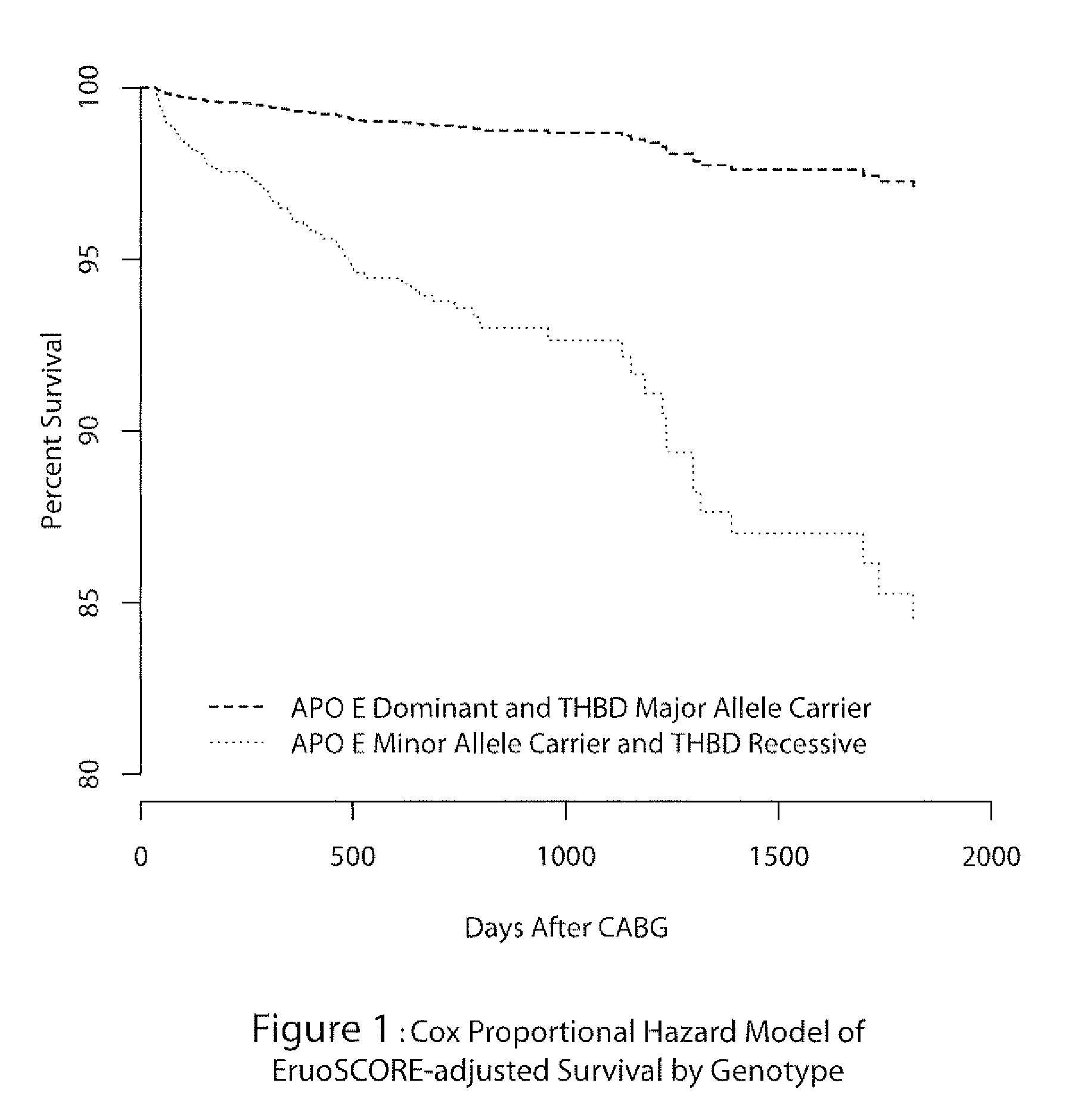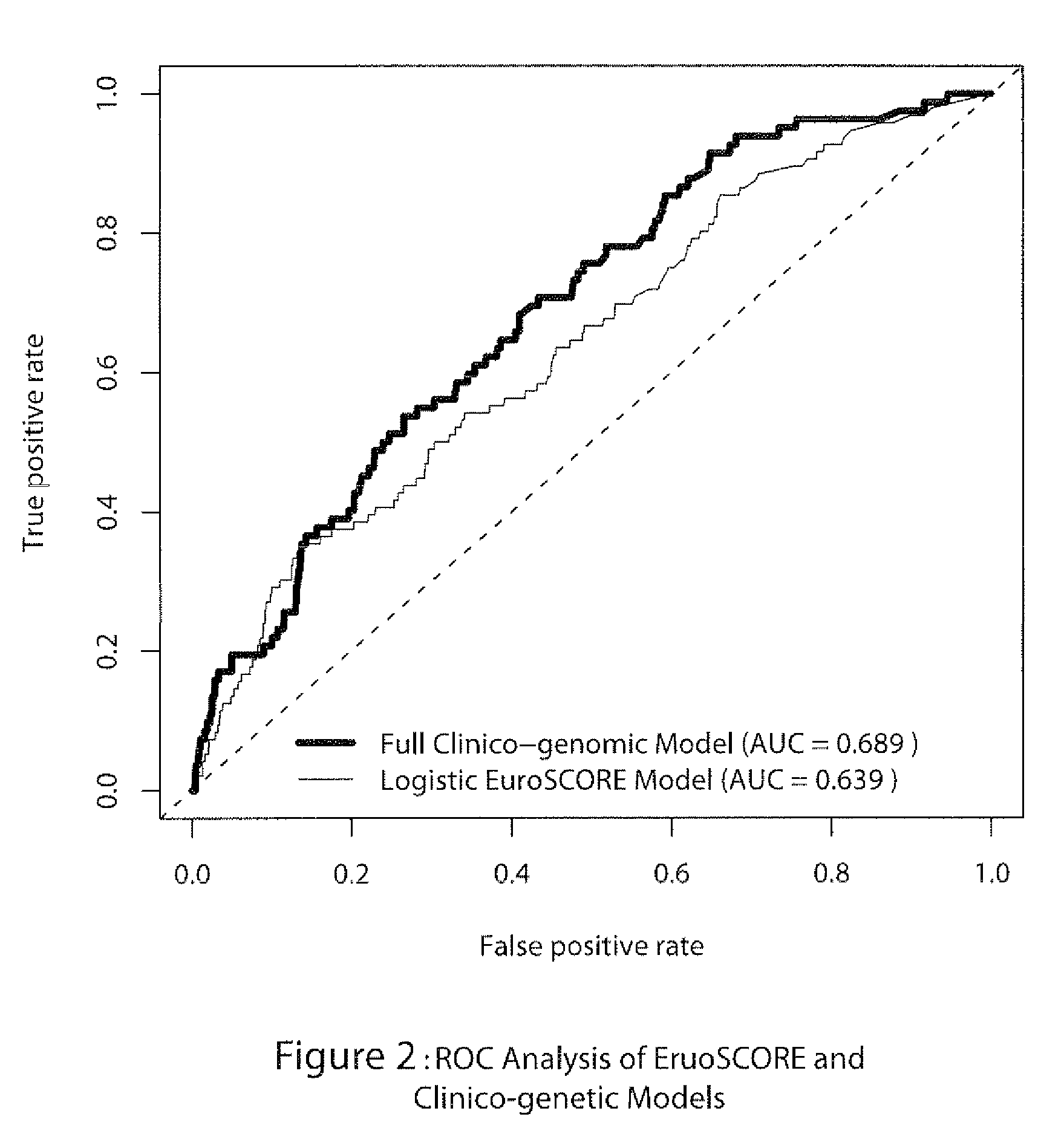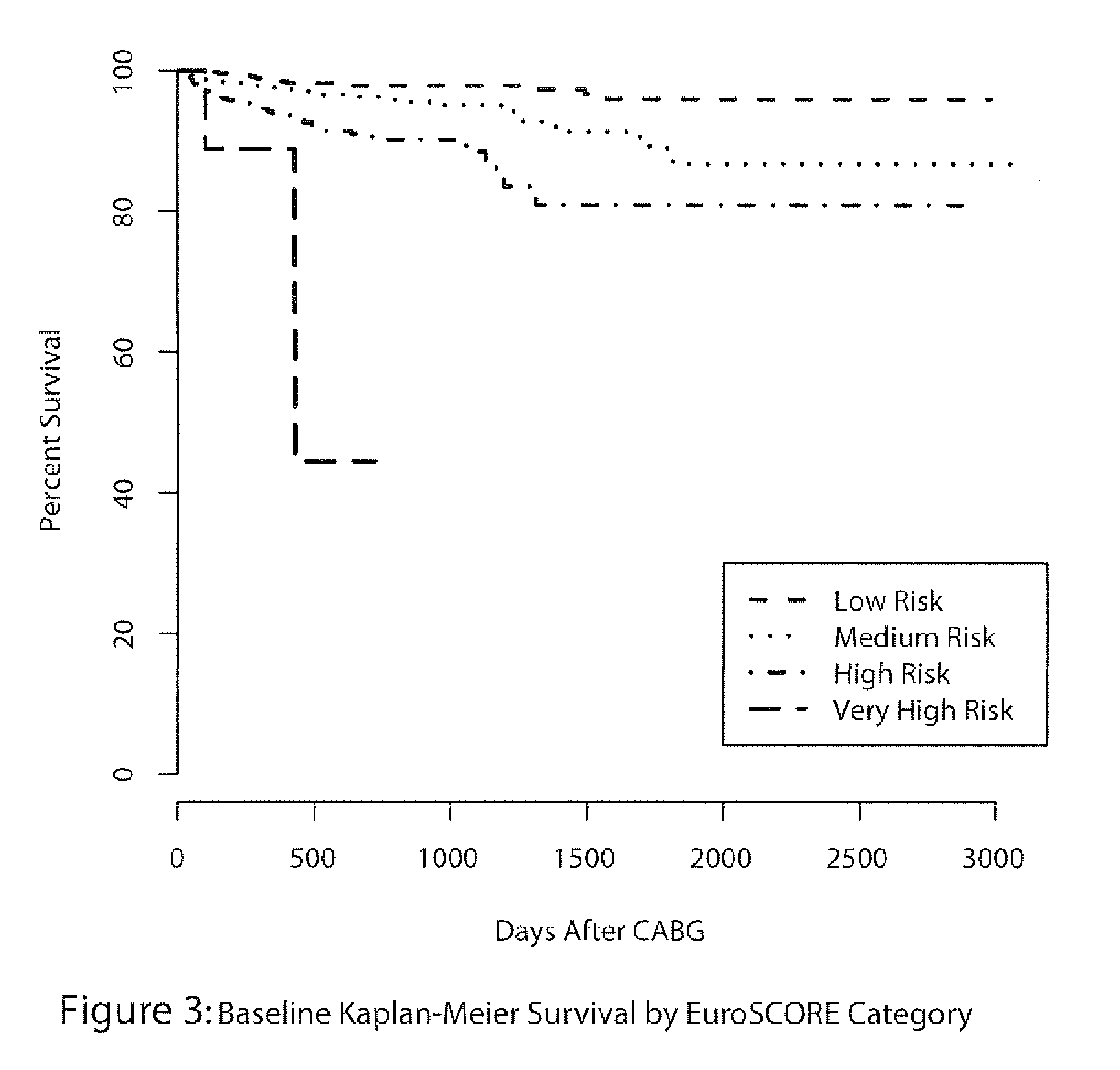Predictors of long-term mortality following coronary artery bypass graft surgery
a technology of coronary artery bypass and prediction of long-term mortality, which is applied in the direction of microbiological testing/measurement, biochemistry apparatus and processes, fertilization, etc., can solve the problem that models are limited in their ability to predict death for specific individuals
- Summary
- Abstract
- Description
- Claims
- Application Information
AI Technical Summary
Problems solved by technology
Method used
Image
Examples
example
Experimental Details
Patient Population
[0028]DNA from a prospective cohort of 2071 patients undergoing CABG with CPB between 1994 and 2002 was examined. All patients were enrolled in the Perioperative Genetics and Safety Outcomes Study (PEGASUS), an Institutional Review Board-approved, prospective, longitudinal study at Duke University Medical Center. Exclusion criteria for the study included history of renal failure, active liver disease, bleeding disorders, autoimmune diseases, or immunosuppressive therapy. A standardized isoflurane / fentanyl anesthetic was administered to all patients. Cold blood cardioplegia and nonpulsatile CPB (30° C. to 32° C.) with a crystalloid prime and pump flow rates >2.4 L / min per m2 was used. α-stat blood gas management, serial hematocrits >=0.18 while on CPB, and activated clotting times >450 seconds were standardized as well.
Patient Mortality
[0029]Follow-up was conducted six months after hospital discharge, and annually thereafter by the Duke Clinical ...
PUM
| Property | Measurement | Unit |
|---|---|---|
| concentrations | aaaaa | aaaaa |
| mass spectrometry | aaaaa | aaaaa |
| flow rates | aaaaa | aaaaa |
Abstract
Description
Claims
Application Information
 Login to view more
Login to view more - R&D Engineer
- R&D Manager
- IP Professional
- Industry Leading Data Capabilities
- Powerful AI technology
- Patent DNA Extraction
Browse by: Latest US Patents, China's latest patents, Technical Efficacy Thesaurus, Application Domain, Technology Topic.
© 2024 PatSnap. All rights reserved.Legal|Privacy policy|Modern Slavery Act Transparency Statement|Sitemap



